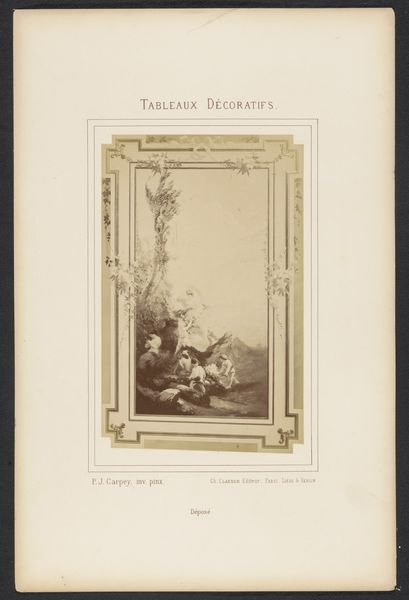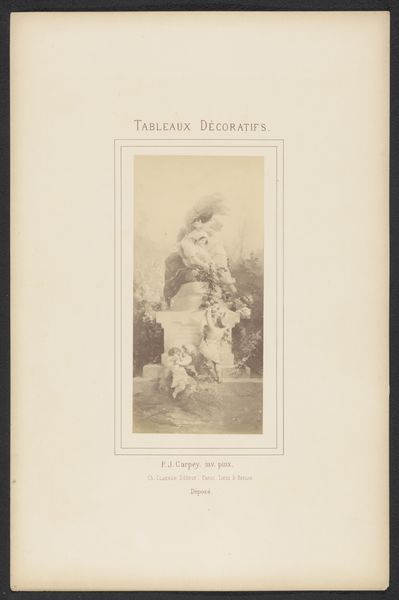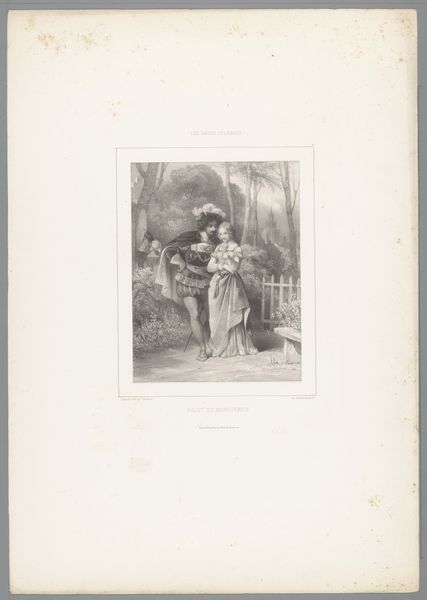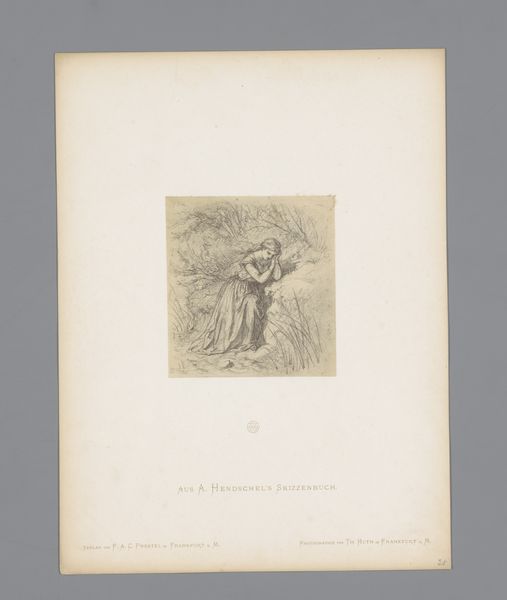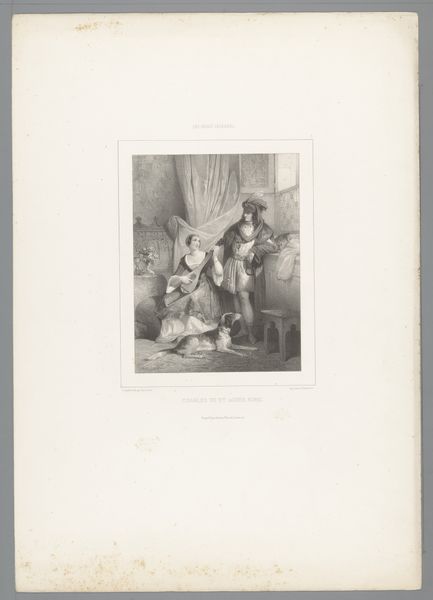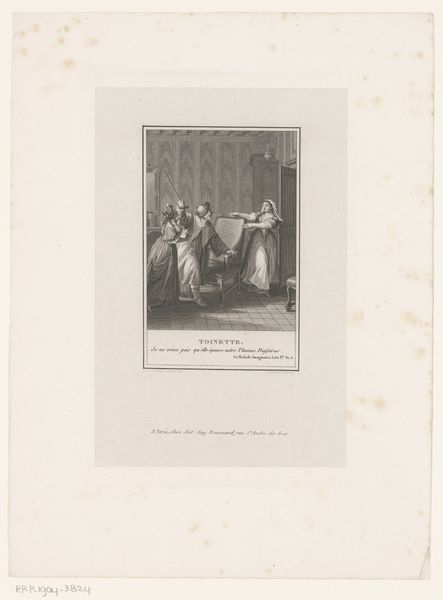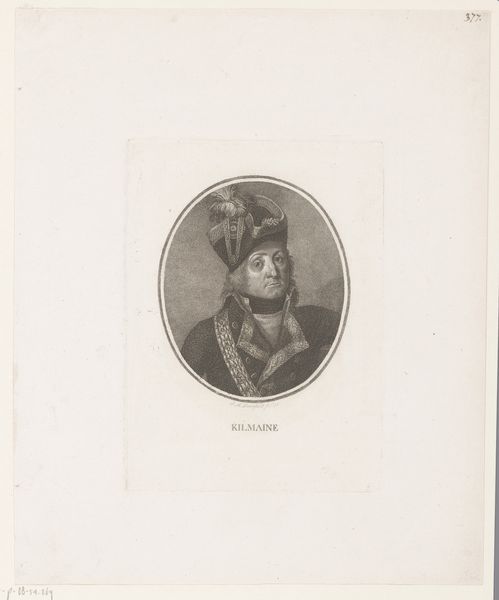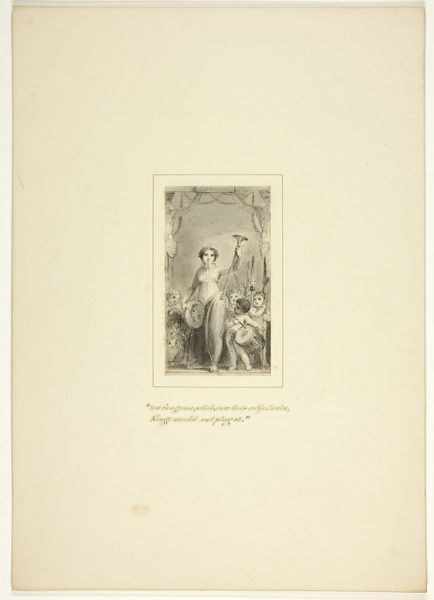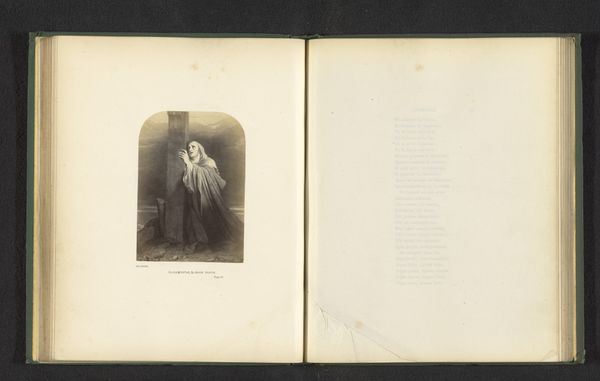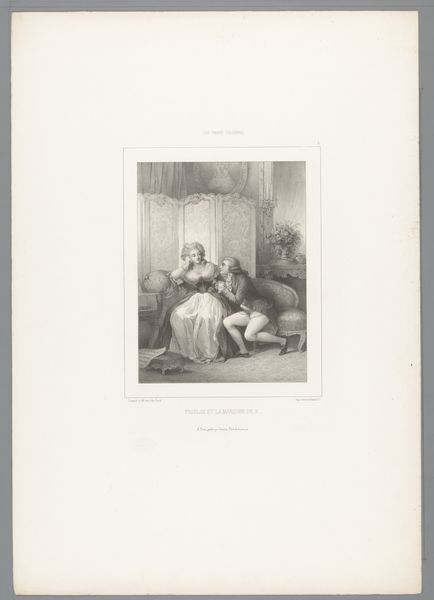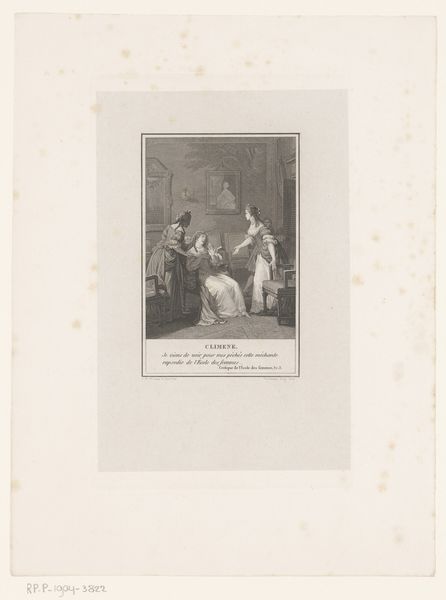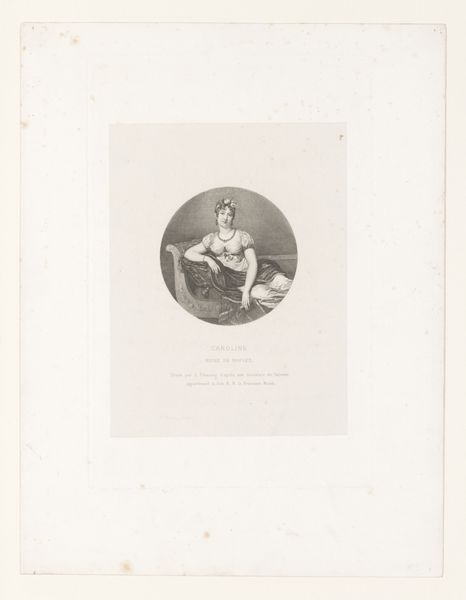
Fotoreproductie van een schilderij van een vrouw en een putti door P. J. Carpey before 1881
0:00
0:00
Dimensions: height 215 mm, width 165 mm
Copyright: Rijks Museum: Open Domain
Curator: This piece is a photo reproduction of a painting by P.J. Carpey, showing a woman with a putto, dating back to before 1881. What are your initial thoughts on this image? Editor: It has a striking dreamlike quality. The soft focus gives it this diffused, ethereal feel, as if the whole scene exists just out of reach. The printing method clearly contributes to this aesthetic. Curator: It’s important to note the academic-art style, with roots in neoclassicism. Think about how women were presented and perceived during that time; these portraits idealized womanhood as pure, allegorical, removed from everyday realities. Editor: Absolutely. The materials, namely the photographic reproduction and print medium, highlight how art was becoming more accessible during this period, disseminated as reproductions. How many people got to see the original compared to something like this? And who had the skills, the labor, to produce the photographic print in the first place? Curator: Good point. These prints allowed wider circulation and democratization of art, while maintaining distinct class lines in production. And it would be interesting to analyze the cultural meanings embedded in its composition, for example, what did the Neoclassical preference of subjects intend for its audience? Editor: It really makes you think about who owned it, where it hung, how this image served a certain class and their pursuit of artistic refinement through technological reproduction. The labour involved in photography is present though perhaps downplayed as compared with painting in this context. Curator: Considering this intersection of technology, aesthetics, and social access allows us to view it with contemporary sensibilities, acknowledging that art objects do not exist within a vacuum, instead deeply rooted in historical, social, and political contexts. Editor: Agreed, and understanding its production—the photographic print itself as a crafted object—offers valuable context about how images were experienced and consumed back then, something we're still wrestling with today in our digital era. Curator: This print prompts us to examine not only what is depicted but also how it reached the viewer, bridging its past with questions relevant to our present. Editor: Exactly, it gives you an appreciation of this work and of its time, while making you consider contemporary society with these questions of production and consumption.
Comments
No comments
Be the first to comment and join the conversation on the ultimate creative platform.
